“They were very well organised with their defensive line and they were compact. We were unable to break down their organisation” – Mauricio Pochettino
An accurate assessment from the Spurs boss following their shock defeat to Newcastle on Sunday afternoon. His side was unable to break down a rigid Newcastle system that frustrated the London club from the outset. A slice of luck and a full portion of hard-work gave Steve Bruce his first three points as Newcastle boss and prevented him from becoming the first Newcastle manager to lose their first three games in charge.
In this tactical analysis, we look at the tactics deployed by Newcastle to restrict Tottenham’s xG to just 0.78. We also use statistics to analyse why Tottenham was unable to break through an organised Newcastle unit in this Premier League clash.
Line-ups
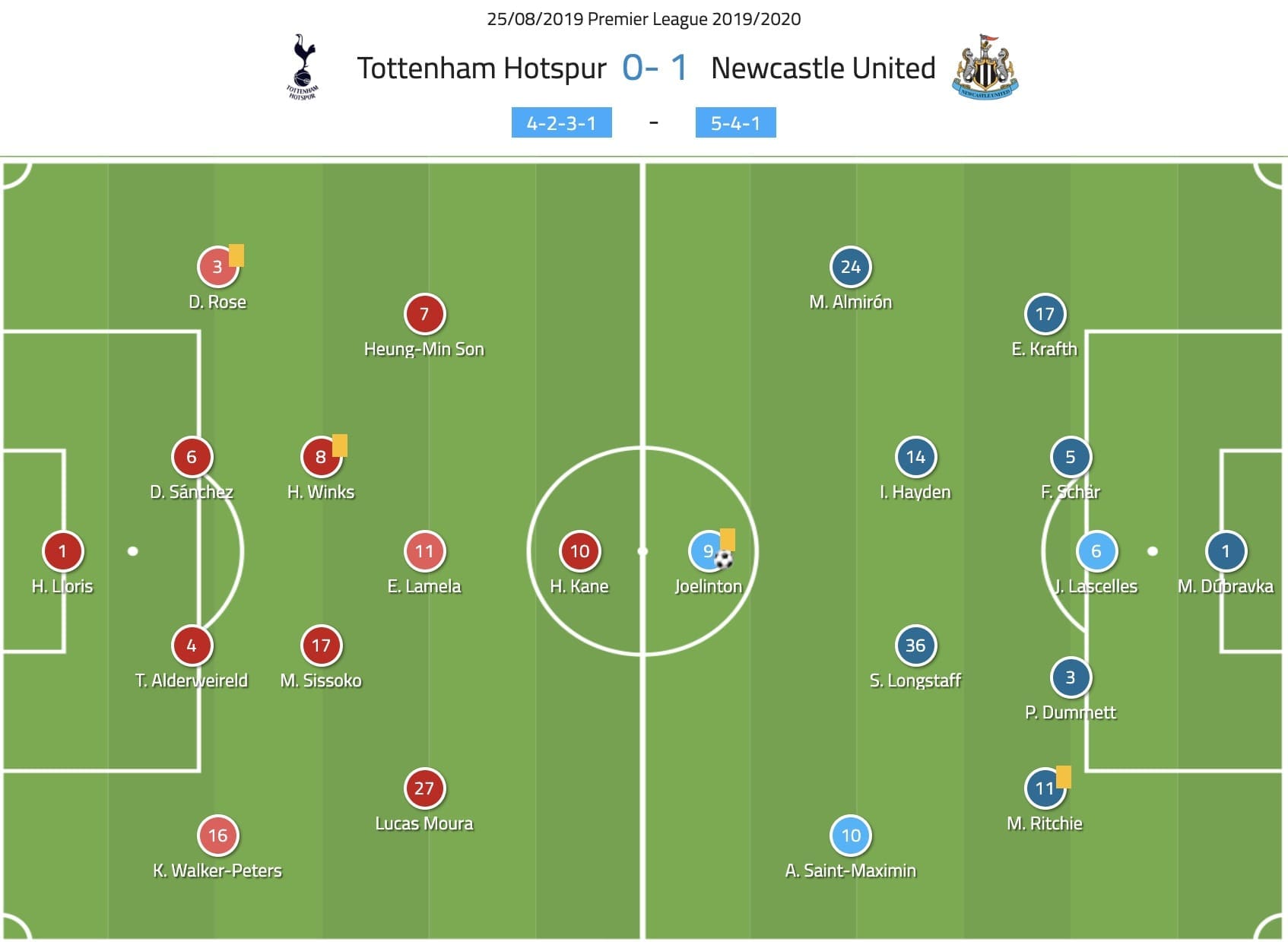
Pochettino lined up in his favoured 4-2-3-1 system, a shape they average an xG of 1.63 this season. Davidson Sánchez and Toby Alderwierled continued as the first-choice centre-back pairing, condemning Jan Vertonghen to the bench yet again. A slight injury to new signing Tanguy Ndombele meant Harry Winks and Moussa Sissoko started in the heart of midfield, acting as a double pivot. Heung-Min Son’s ban finally came to an end, and he was placed straight into the starting line-up as the future of Christian Eriksen remains uncertain. Harry Kane spearheaded the attack in a lone role, where he struggled to impact the game, which we look at later.
Newcastle arrived at the Tottenham Hotspur Stadium with a game plan. Bruce wanted stability and organisation, which he sought using a 5-4-1 system. The centre-back trio remained constant from their defeat to Norwich last week. Emil Krath and Matt Ritchie started as the wing-backs, whose primary duty was to protect the back three and prevent overloads from occurring in the wide spaces. In transition or rare spells of possession, the wing-backs were also used to support the front players by crossing from deep. Joelinton started as a lone striker and was supported by the pace of Miguel Almirón and Allan Saint-Maximin, who was used as the starting points for counter-attacks.
Newcastle’s rigidity
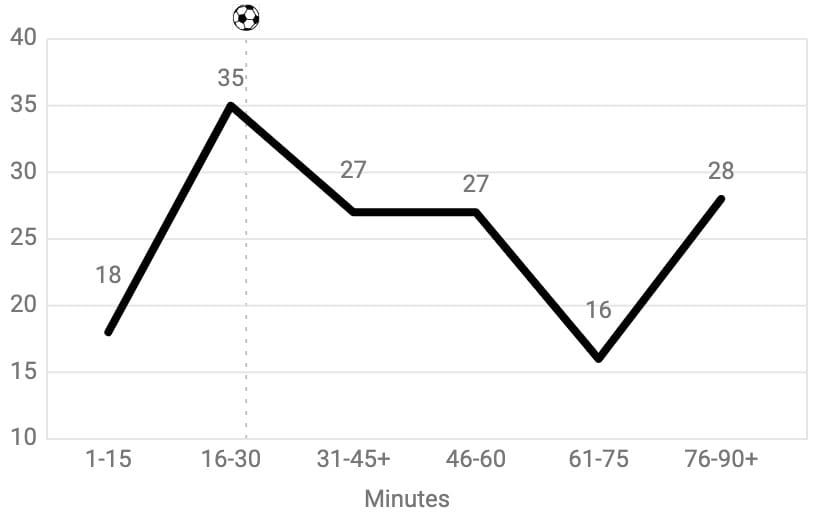
Newcastle started the game in their rigid 5-4-1 formation. They sacrificed possession in favour of defensive stability. The magpies only had 25% of the ball in the match, meaning for 75% of the time their shape had to be organised and impenetrable to maintain their slender 1 goal lead.
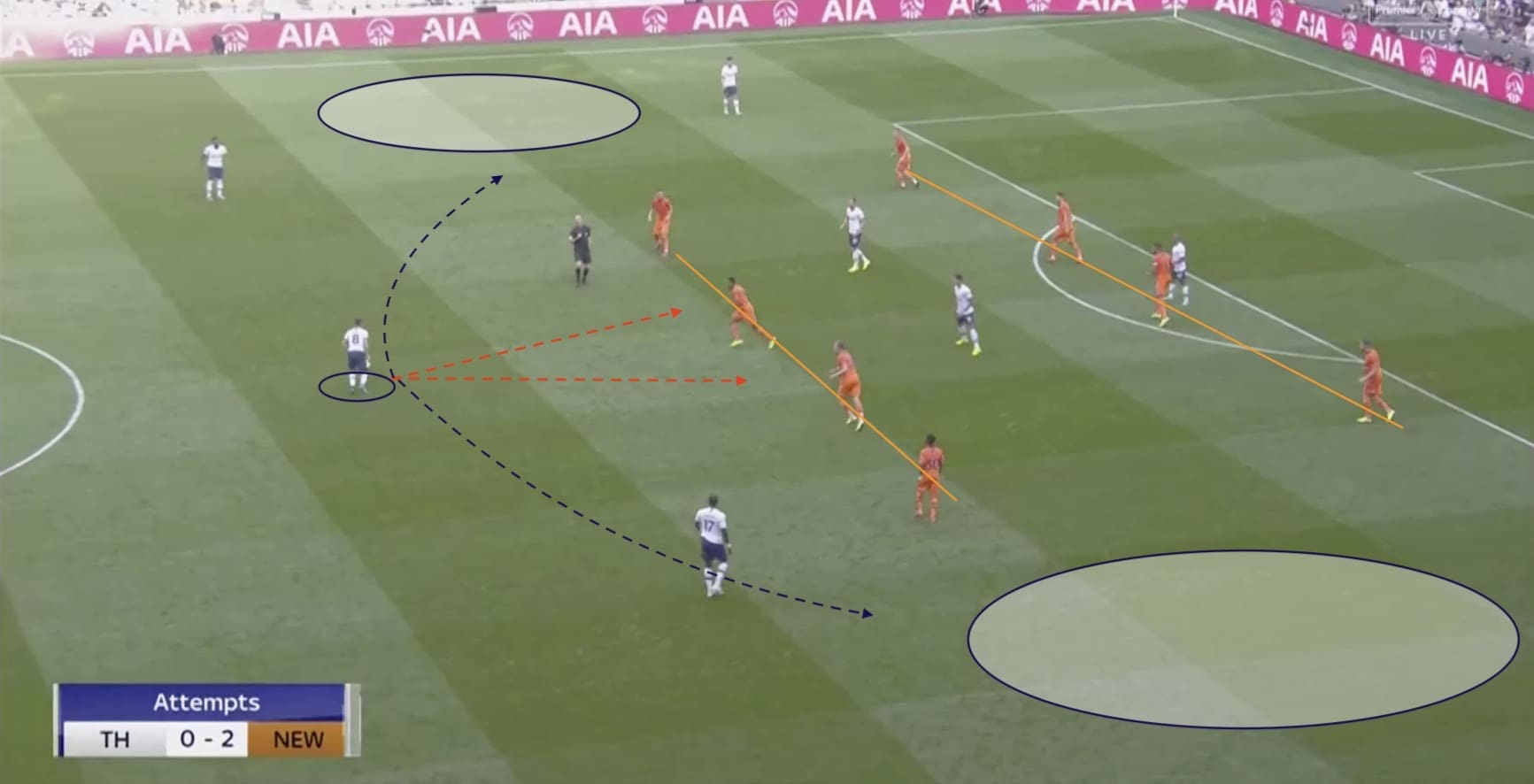
Out of possession, Newcastle’s philosophy was to have men behind the ball to restrict spaces for Tottenham to operate. In an attempt to keep the ball in front of them, making defending easier, Newcastle’s defenders dropped off and took up narrow positions. The wing-backs tucked in alongside their respective centre-backs to ensure the half-spaces were congested.
Above you can see how narrow the Newcastle midfielders positioned themselves as Tottenham attempted to create attacks. This tactic had two key benefits. Firstly, the narrowness of Almirón and Saint-Maximin meant passes through the centre of the pitch were difficult and would have had to have been inch-perfect to be successful. The second benefit was the by-product of this tactic.
With the Newcastle shape too robust to breach, Tottenham was forced into the wide areas as they attempted to bypass the low block. Due to Newcastle’s defensive formation, they had additional players in the wide areas who moved out to the wings to close down the crosser, without leaving gaps in the half-spaces. The wing-back moved out, supported by the additional centre-back and the midfielder ensured no overloads were created on either side of the pitch.
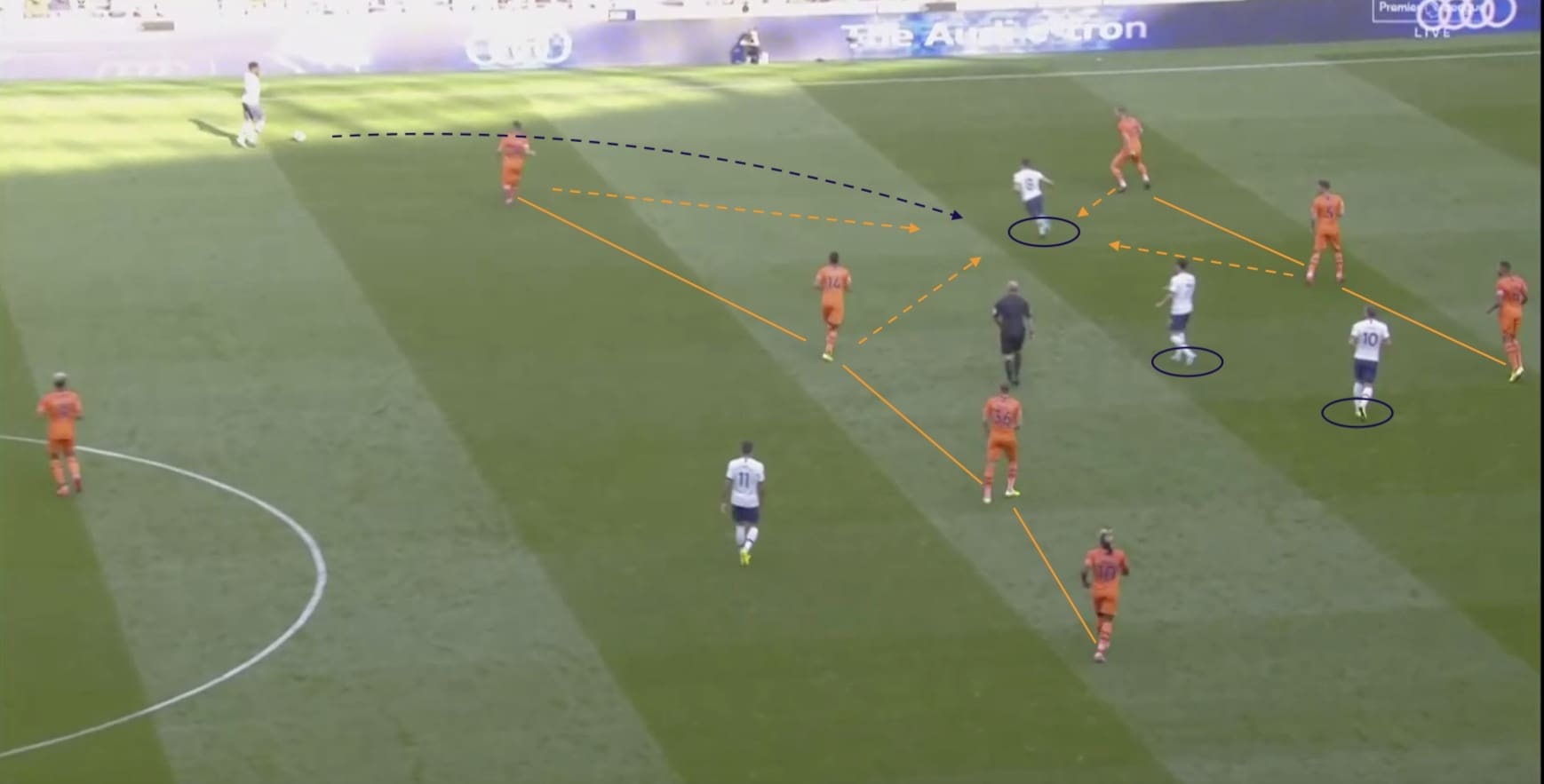
It wasn’t a complete park-the-bus approach by Newcastle however, as they had to be aggressive for their tactics to work. As mentioned, the defenders dropped off to ensure they weren’t exploited in behind. However, they maintained a high enough line to keep the space between their defensive line and the midfield small enough to press if Spurs did receive the ball in these tight spaces.
As you can see above, Tottenham recycles possession, attempting to pull the Newcastle shape apart. After a few ball rotations, they created enough space to find a smart pass into an attacking player. Newcastle, however, had a system in place to prevent danger from building from this point. Because of the narrowness and condensed vertical spaces between the lines, once a Tottenham player received a pass, Newcastle was able to press the ball immediately and prevent the player from lifting their head or turning on the ball.
The condensed spaces meant Newcastle pressed quickly and efficiently from multiple angles, forcing the attacking player to instantly play out from the space they occupied. In doing so Tottenham was never allowed the time or space to turn and develop the attack from these dangerous areas. As a result, Spurs only managed two shots on target in the whole match.
Kane nullified
Pochettino said in the post-match interview that Spurs had too few shots for the amount of possession they had in the game. There were several reasons for the lack of chances created by Spurs, which we look at below.
As discussed above Newcastle’s shape was organised, rigid and frustrating for the London club. Particularly for Kane, who only managed just 24 touches – fewer than Hugo Lloris – in the entire match. Of these 24 touches, only four were inside the box, as the England striker left his natural position in search of the ball.
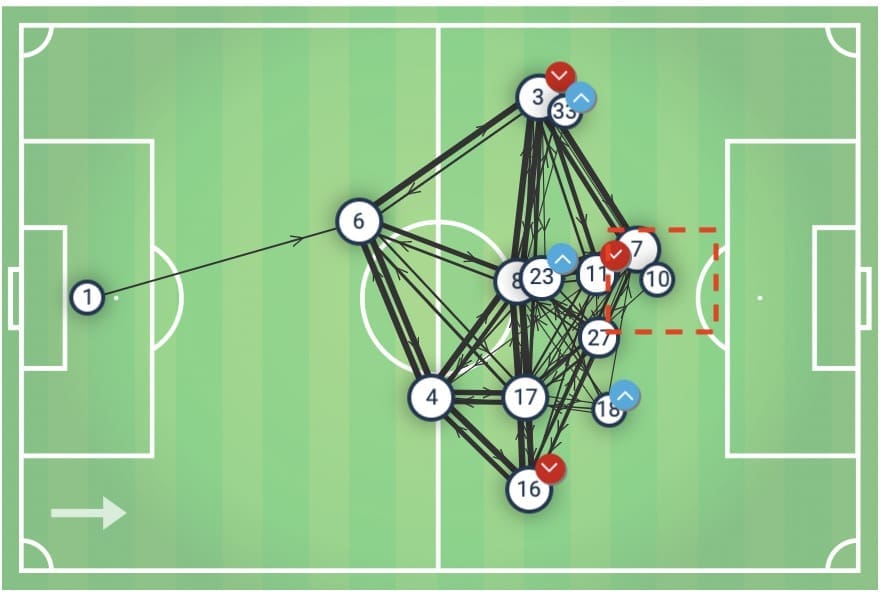
The England striker had a difficult afternoon finding space as Spurs were slow in the build-up phase. The analysis shows their methodical approach was considered and systematic, averaging 18.21 passes per minute. This, however, was too slow to exploit spaces in the split seconds they appeared. Tottenham often continued to pass laterally and backward until the ball was lost, missing opportunities to penetrate. The pass map above shows how little of an effect Kane had in the match, being isolated and swamped by Newcastle’s system.
Kane grew more and more frustrated with his lack of involvement and began to venture away from his intended position. Below you can see how Kane dropped deeper in search of touches on the ball. These were ultimately useless to the team as he sacrificed the opportunity to make dangerous runs in an attempt to become involved.
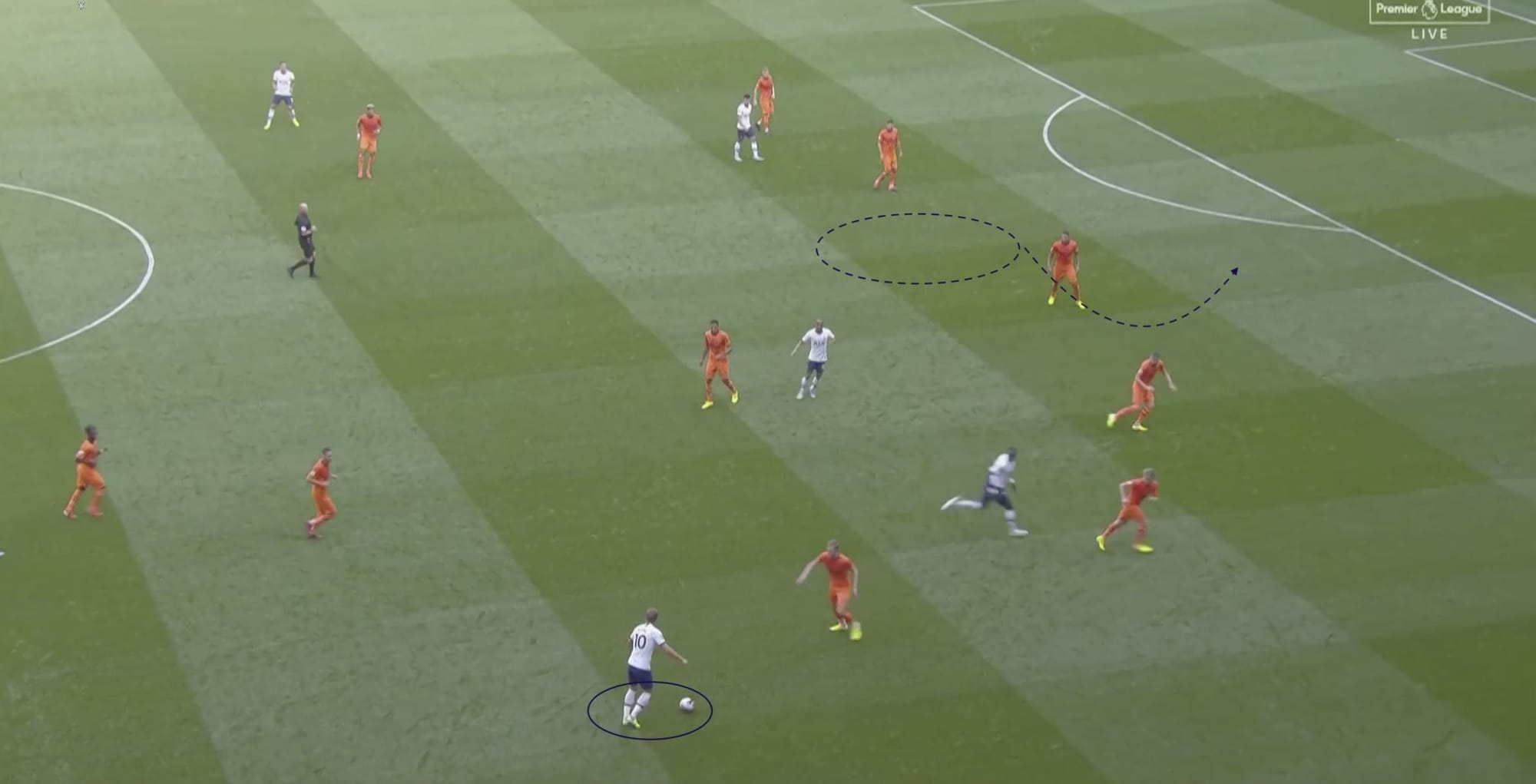
Had Kane of stayed patient and continued to stretch the Newcastle backline with sharp movements into the half-spaces he might have achieved an xG above zero in this game.
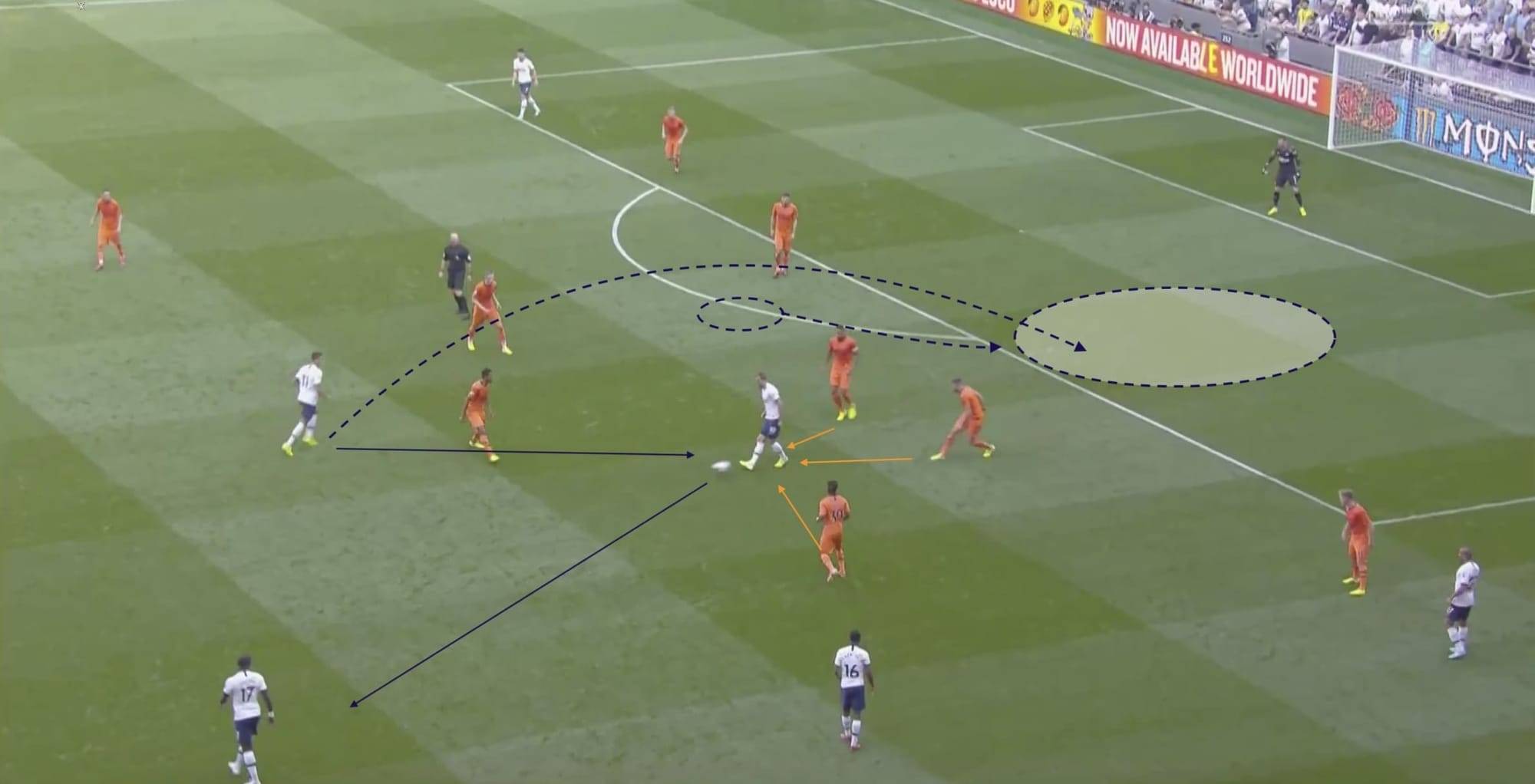
Above is another example of how Kane was forced to play with his back to goal, completely nullifying his effect in the game. If he did receive a pass in these positions he was immediately pressed and forced to play backwards on his first or second touch. As a result, Tottenham became toothless, their attempts were reduced to long-range efforts, with 53% of their shots coming from outside the box. Spurs’ average shot distance was a rather audacious 21.45 metres, compared to their average last season of 18.62.
Tottenham’s defensive mistakes
Based on the statistics and control Tottenham exerted on the game, they should have achieved a 0-0 draw at a minimum had it not been for defensive errors to compound their attacking woes. Spurs often found themselves vulnerable at the back as Newcastle achieved an xG of 0.68 with minimal possession.
Their downfall was that they left crucial spaces in between their full-backs and centre-backs which Newcastle exploited. This occurred in both defensive transitions and in the defensive phases of play which we look at below.
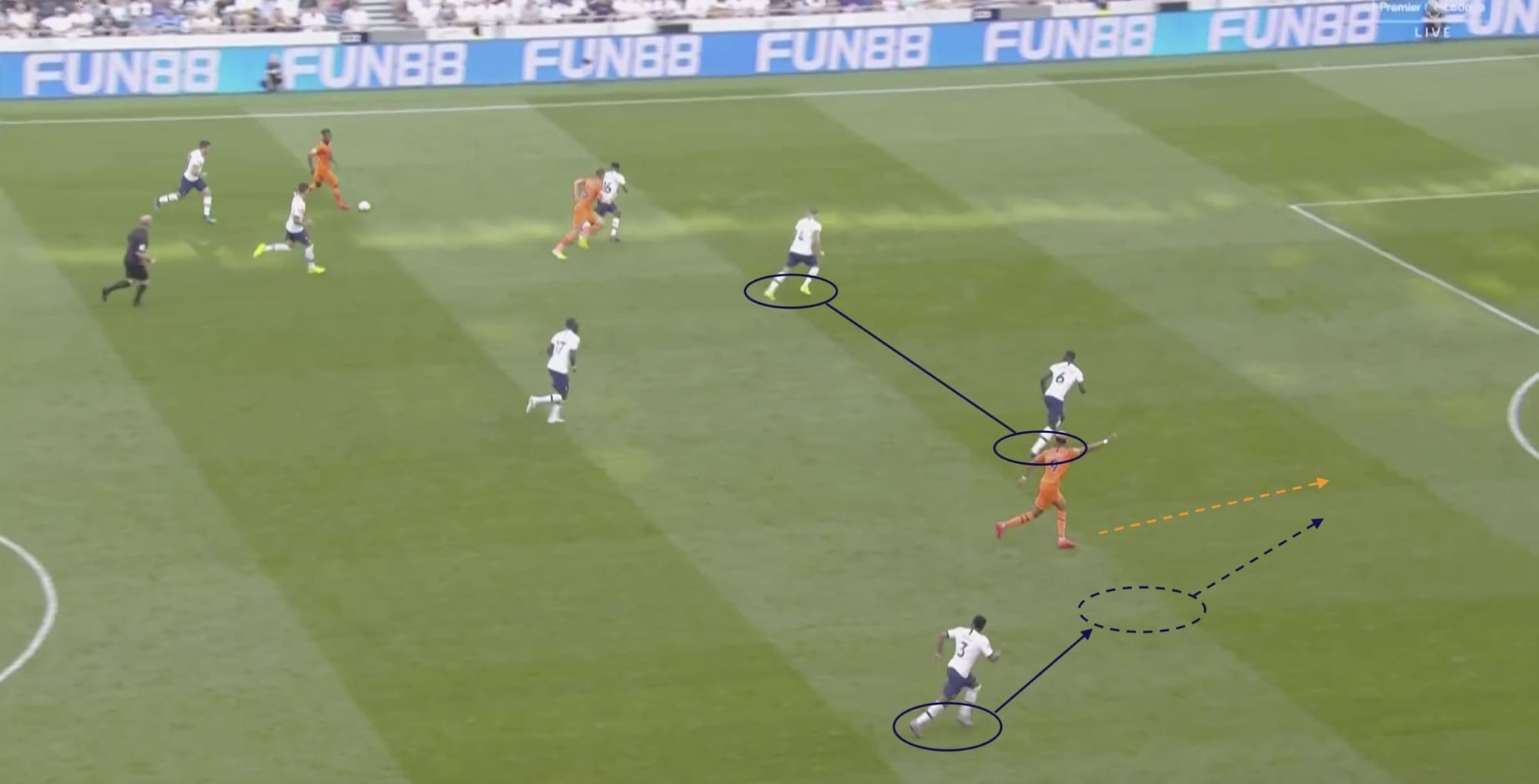
Whenever Tottenham lost possession Newcastle attempted to punish their advanced full-backs by running off the back of the centre-backs and into the empty spaces. As you can see above, on turnover of possession Danny Rose is out of position and struggling to get the right side of his man. Ideally, Rose would have been closer to Sánchez so he could either follow the run of Joelinton closely or hold the line and play for offside. Instead, he is behind the play and Newcastle exploits the space.
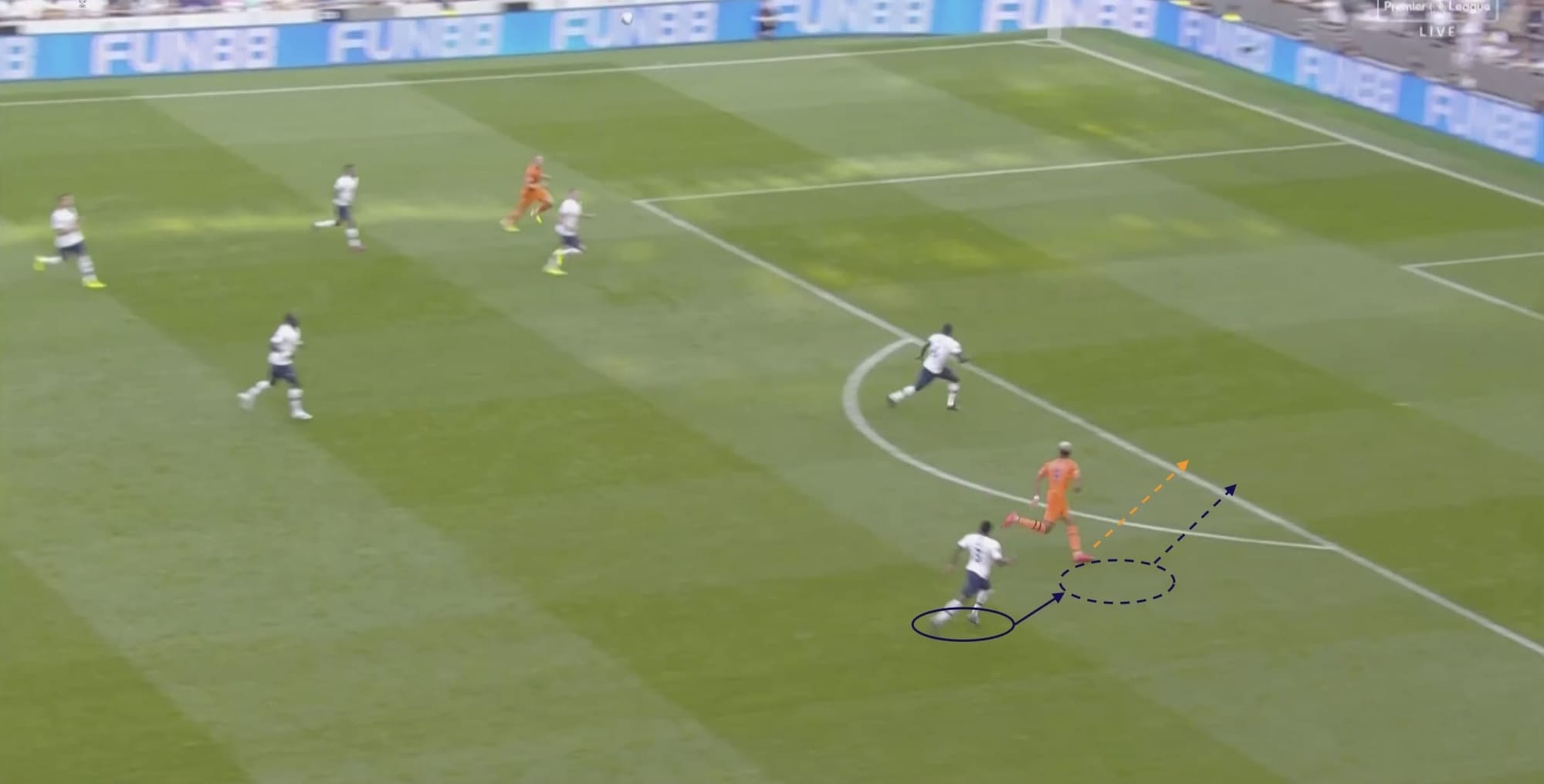
Rose never fully recovered his positioning allowing Joelinton to get an attempt on goal. This happened throughout the match as Tottenham pushed higher in search of a goal. As a result, however, they ended up conceding, and ultimately losing the game because of the space they conceded between the full-backs and the centre-backs.
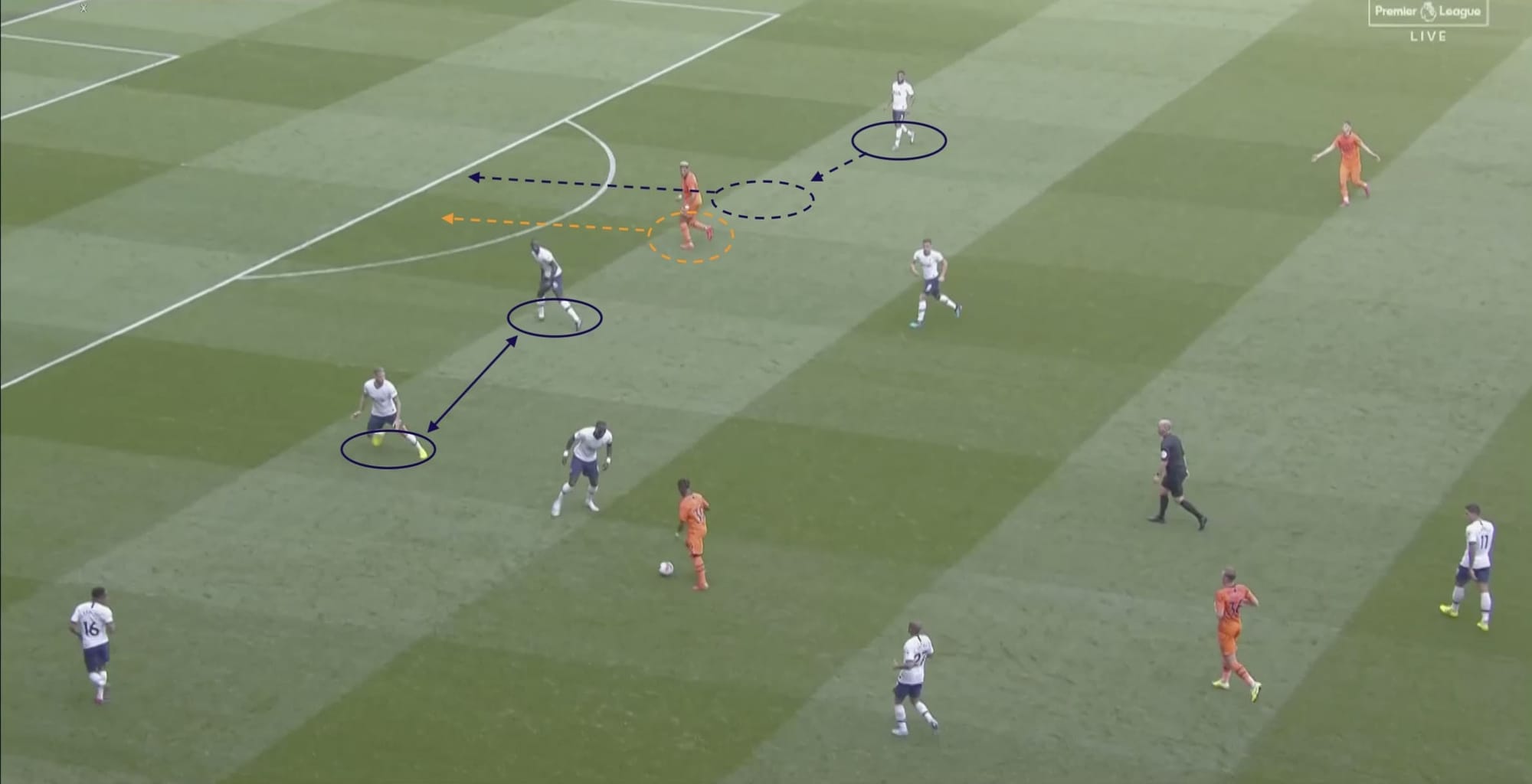
Above is the goal that Newcastle scored, again from exploiting the space abandoned by Rose. This time it isn’t in a transitional phase, Rose has just allowed the gap between him and Sánchez to expand too much. This allowed Joelinton to move freely into Sánchez’s blind spot, which should be covered by Rose.
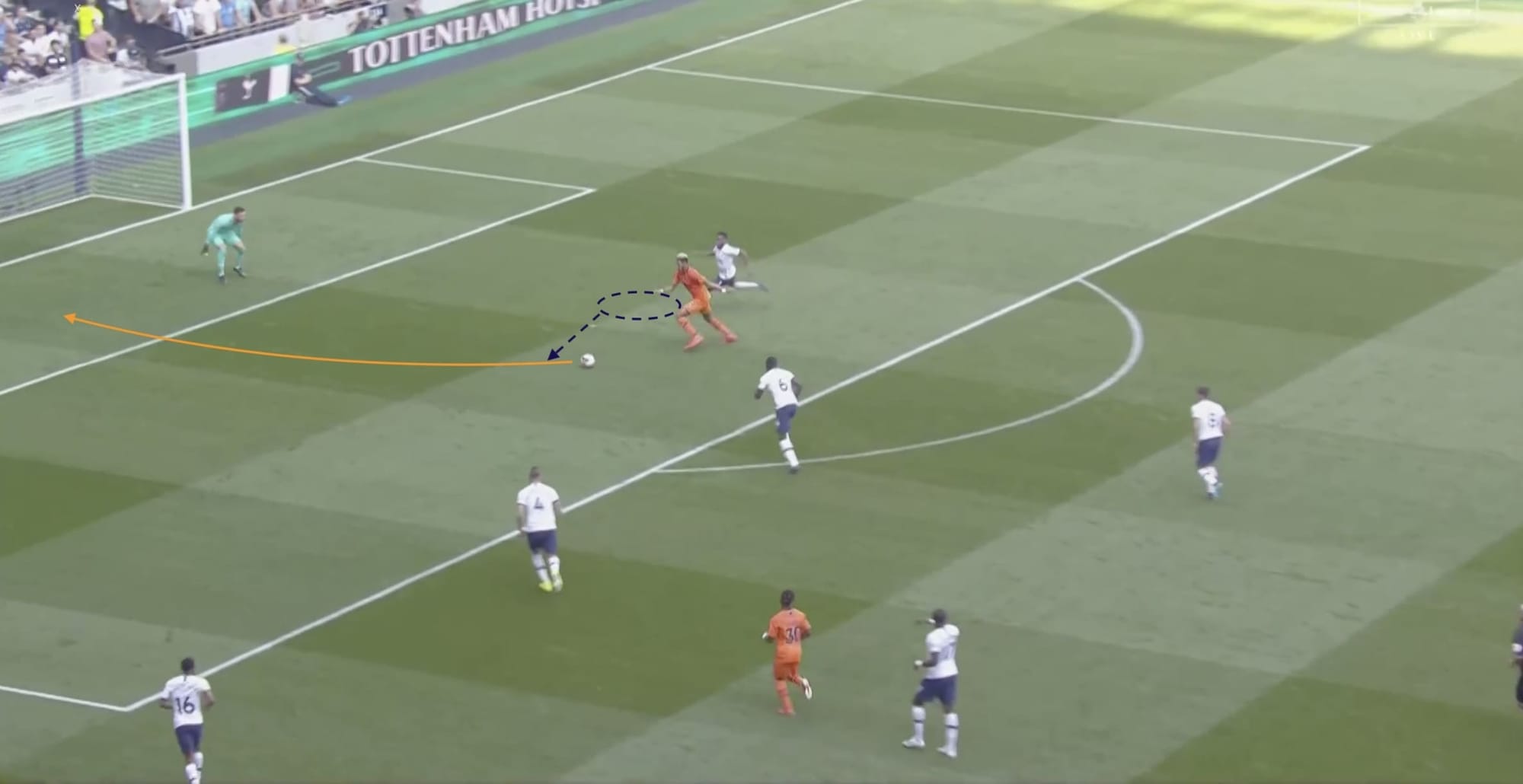
This isn’t the case, and in the end, Rose again has too much to do to recover, allowing another shot at goal. This time Joelinton buried his chance and allowed Newcastle to sit back into their organised shape, drawing Tottenham forward.
Conclusion
Tottenham will be bitterly disappointed to lose a game they would have marked as a three-pointer. Without Eriksen in the side, their attack looked stifled and out of ideas, highlighting the importance of keeping him in London. They also demonstrated defensive frailties that were exploited by a low-scoring Newcastle side. Pochettino will no doubt make his thoughts known to the players who will have to improve if they want to disrupt the top two this season.
Steve Bruce, on the other hand, will be relieved to put his first three points on the board. He has his Newcastle side playing a robust, and organised style, which is only lauded when results go well. Difficult fixtures lay ahead for the North Eastern side, who may need to play more expansively if they are to achieve a mid-table finish as the fans hope and expect in equal measures.

If you love tactical analysis, then you’ll love the digital magazines from totalfootballanalysis.com – a guaranteed 100+ pages of pure tactical analysis covering topics from the Premier League, Serie A, La Liga, Bundesliga and many, many more. Buy your copy of the August issue for just ₤4.99 here.

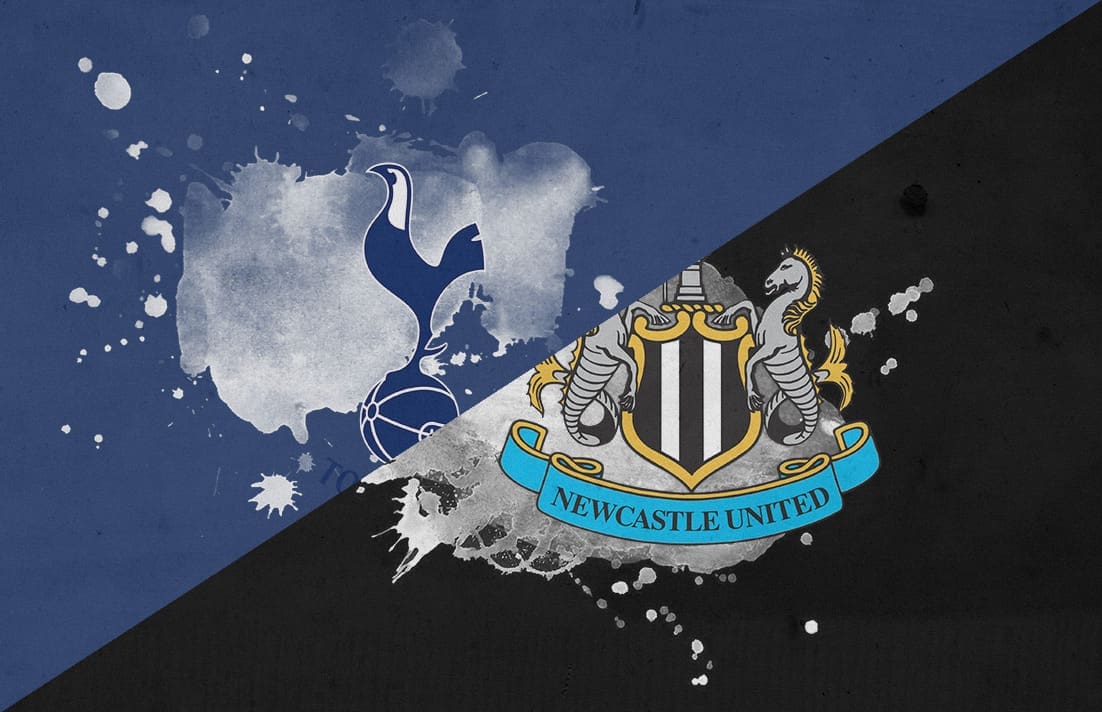



Comments